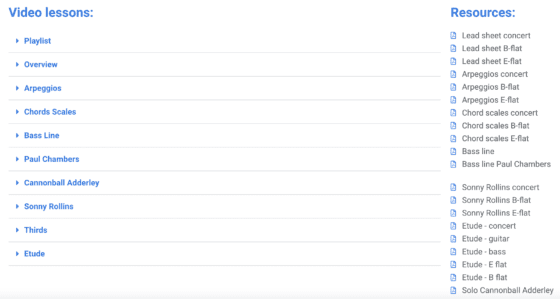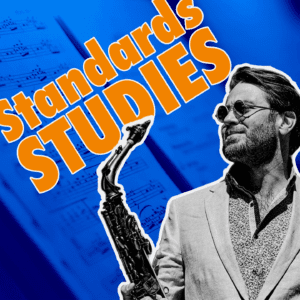Hi !
“What Is This Thing Called Love?” is a 1929 popular song written by Cole Porter, for the musical Wake Up and Dream. It was first performed by Elsie Carlisle in March 1929. The song has become a popular jazz standard and one of Porter’s most often played compositions.
Jazz musicians soon included the song in their repertoire. The recordings of Ben Bernie and Fred Rich (vocal by The Rollickers) made it to the charts in 1930, and the song was also recorded by stride pianist James P. Johnson, clarinetist Artie Shaw and guitarist Les Paul. The piece is usually performed at a fast tempo; the 1956 recording of Clifford Brown and Max Roach with Sonny Rollins is one of the best-known uptempo instrumental versions.
I have included in the playlist Charles Mingus answer to the question with his countrafact on the same changes Wham Bam Thank You Ma’am.
Video lessons:
Lyrics:
Leading a life apart
When love flew in through my window wide
And quickened my humdrum heart
I was so happy then
But after love had stayed a little while
Love flew out again
This funny thing
Called love
Just who can solve its mystery
A fool of me?
One wonderful day
You took my heart
And threw it away
That’s why I ask the lord
In heaven above
What is this thing
Called love?




20 comments on “What is this thing called love”
Alex,
Thanks for making a guitar chart for the etude. However, there are a few low D’s in the chart that fall below standard tuning for a 6 string guitar. Personally, I don’t mind reading the concert chart, and placing it in whatever octave I feel works for me.
Trying to play in 10, obviously not my forte… but it makes playing in 4 feel a little easier 😉
Hi Alex, In Chords scales exercise I wondering the reason we land on third to time on measure 59 (I think it should be the root) and 67 which seems more logical. Is there something I did not catch?
Hey Franck! So on bar 59, you couldn’t reach the root unless you play an interval of a third and on bar 67 it would be an interval of a fourth.
Here I really want to play as horizontally as possible, using only step motions, and we don’t have to land on the root, we start on the root, then the third, then the fifth of the II-7 and we see where that brings us on the V7 and then on the I. These are merely options I suggest but you can make your own variations!
Attempting to play pretty fast
I’m listening the Play List (thanks a lot Alex!) and by searching some informations about the Winton Marsalis version, i just found the following video. The sound might not be so clear but it gives the way the guys play together. “What is this thing called Love” is at the begining after presentations : https://www.youtube.com/watch?v=65f-ms0Gnt8
Hi Alex, it seems that “Arpeggios Concert” links to the “Arpeggios E-Flat” file (?)
Thanks for letting me know, I’ve corrected the link 🙂
What a fun transcription, lesson coming soon 🙂
a very interesting version by Ahmad Jamal with a pedal of G on the A’s but also on the bridge !!! wonderfull bass line by Israel Crosby https://youtu.be/T0Eg9TuI1Nk
Another one by Eric Lelann and Martial Solal https://youtu.be/h-dgvg19H68
Yeah thanks Pierre, I added these to the playlist 🙂
I like to warm up playing standards over the tonic pedal, great for intonation and to feel the color of each melody note in relationship with the key!
Here is the drone:
Alex, Par curiosité, j’ai superposé le début d’Alabama de John Coltrane, sur le rubato de la première vidéo de la leçon, vis-vis de l’effet de Pedal au Piano et le son du ténor.
Hi Alex. I think you should add to the playlist this version of Jimmy Smith because it has nice solos by Curtis Fuller, George Coleman, Lee Morgan. https://youtu.be/njTliiXoRig Thanks. Ciao
done, thanks for the suggestion 🙂
Hi Alex,
Think the link for Lead Sheet Concert and Lead Sheet B-Flat for “ What Is This Thing…Love” are reversed – yes?
Exact Diana, I’ll correct that, thank you 🙂